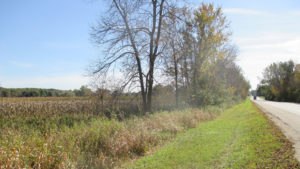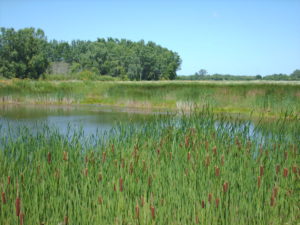Project Overview
In 2015, the raSmith wetland team was retained by RFDII, LLC to complete a feasibility study for a proposed wetland mitigation bank site in the City of Burlington. The purpose of wetland mitigation banks is to restore, enhance, or create wetlands and provide credits to offset unavoidable impacts to existing wetlands. They are owned and developed by private entities otherwise referred to as “mitigation bank sponsors” who sell credits to permittees that are required to provide compensation for wetland loss. The RFDII Wetland Mitigation Bank was proposed to facilitate credits in southeastern Wisconsin. At the time of RFDII’s request, there was a great demand for wetland compensatory mitigation credits in the state, and there were few options available for applicants to purchase credits in the Southeastern Wisconsin region.
raSmith wetland ecologists conducted the initial feasibility study to determine whether the site contained characteristics that would be suitable for a mitigation bank site. The site had a history of agricultural use and contained both drain tiles and ditches which are intended to drain wet areas. It was also confirmed to have hydric (wetland) soils which provided further proof that the site was historically wetland. Based on raSmith’s feasibility analysis, it was determined that the site appeared to be a suitable option for wetland mitigation as it met the minimum wetland mitigation bank size requirement of at least 25 acres (including the required upland buffer) and contained historic wetlands that were drained, isolated from disturbances, and hydrologically isolated.
After determining that the site was a suitable candidate for a mitigation bank, raSmith wetland ecologists prepared a Draft Prospectus document to allow the Interagency Review Team (IT) to review the proposed wetland mitigation bank site and general wetland restoration plan. The IRT is made up of representatives from the U.S. Army Corps of Engineers (USACE), Wisconsin DNR (WDNR), Environmental Protection Agency, Fish and Wildlife Service (FWS), and Natural Resources Conservation Service (NRCS). A representative raSmith wetland ecologist met with the IRT on-site to gain their feedback and confirm that the site met the qualifications for a mitigation bank.
raSmith later collaborated with GZA GeoEnvironmental, Inc. to monitor the site’s existing hydrology, determine the locations of existing drain tiles, and produce a Final Prospectus Document. The Final Mitigation Bank Instrument subsequently followed and was later approved by the WDNR and USACE. The constructed RFDII Wetland Mitigation Bank has since been completed and has been approved to release credits in the Upper Illinois Service Area.




